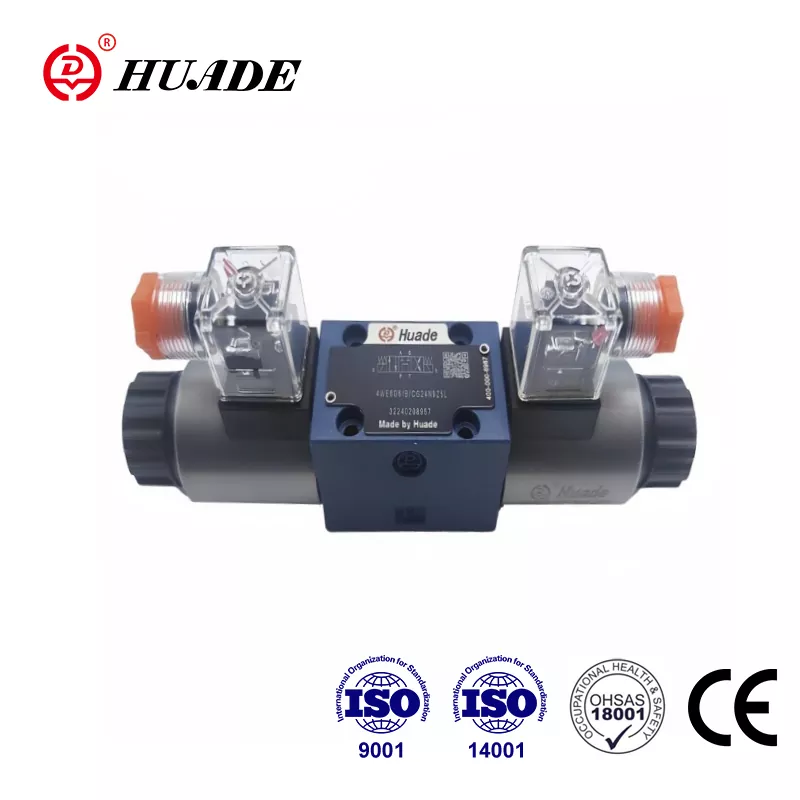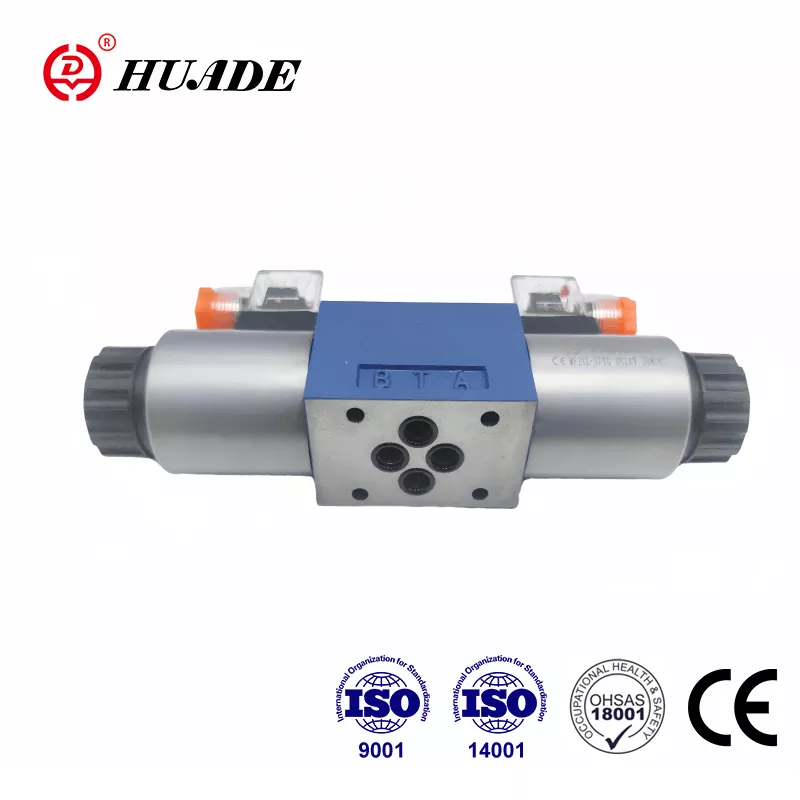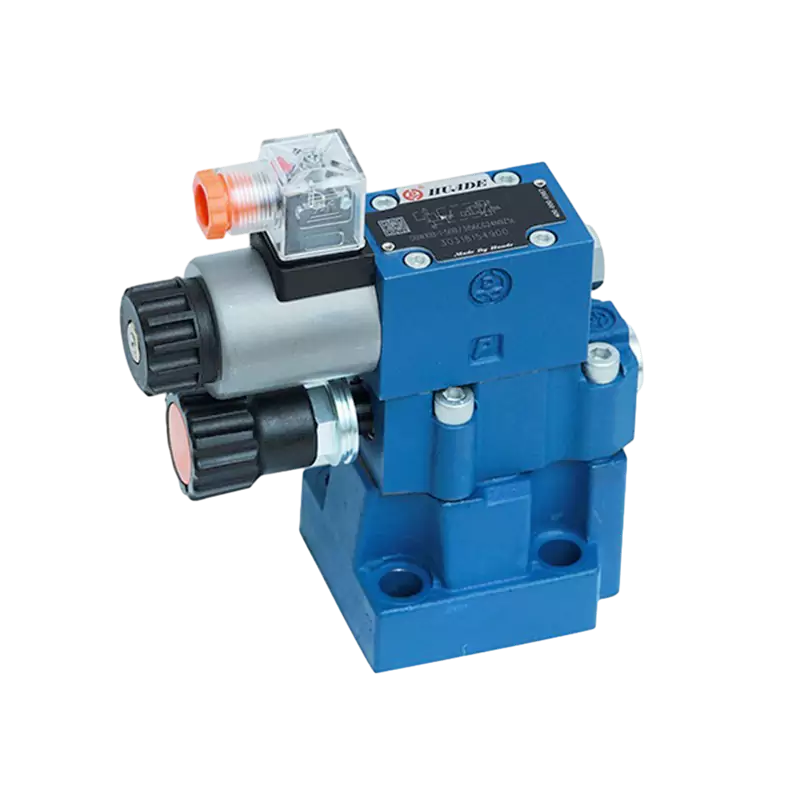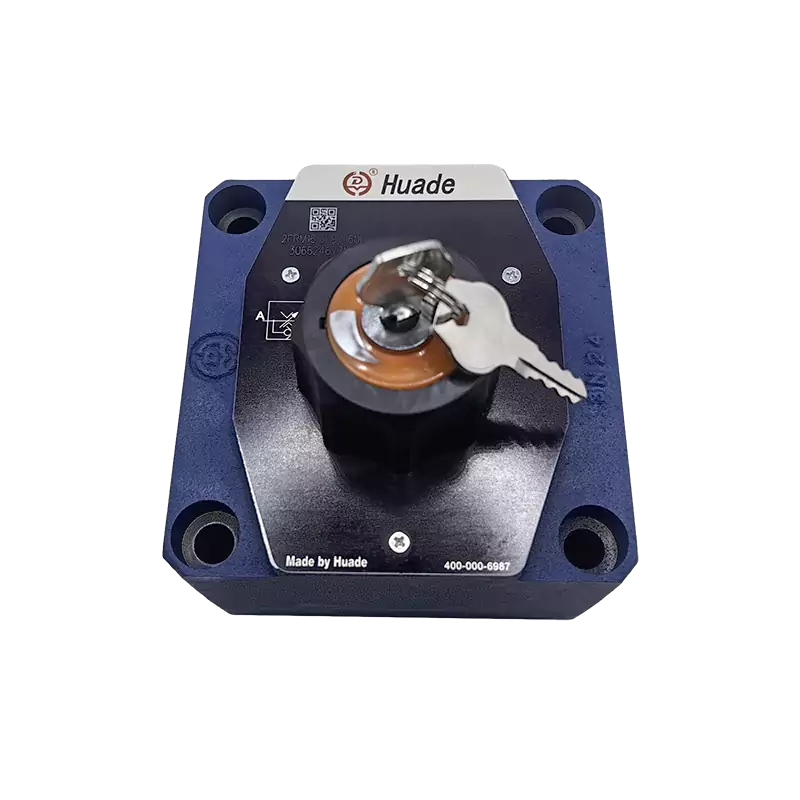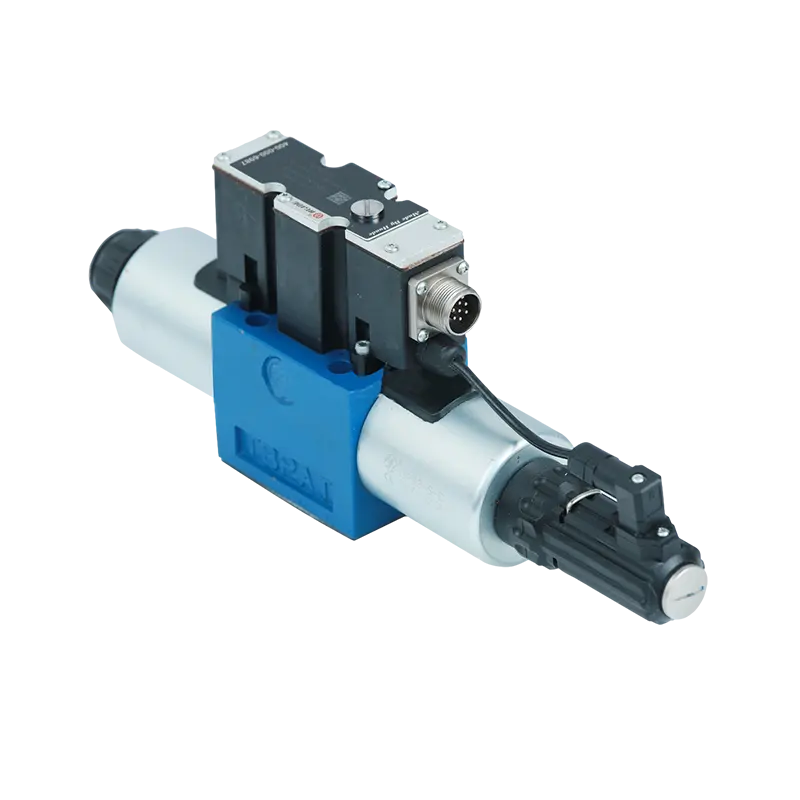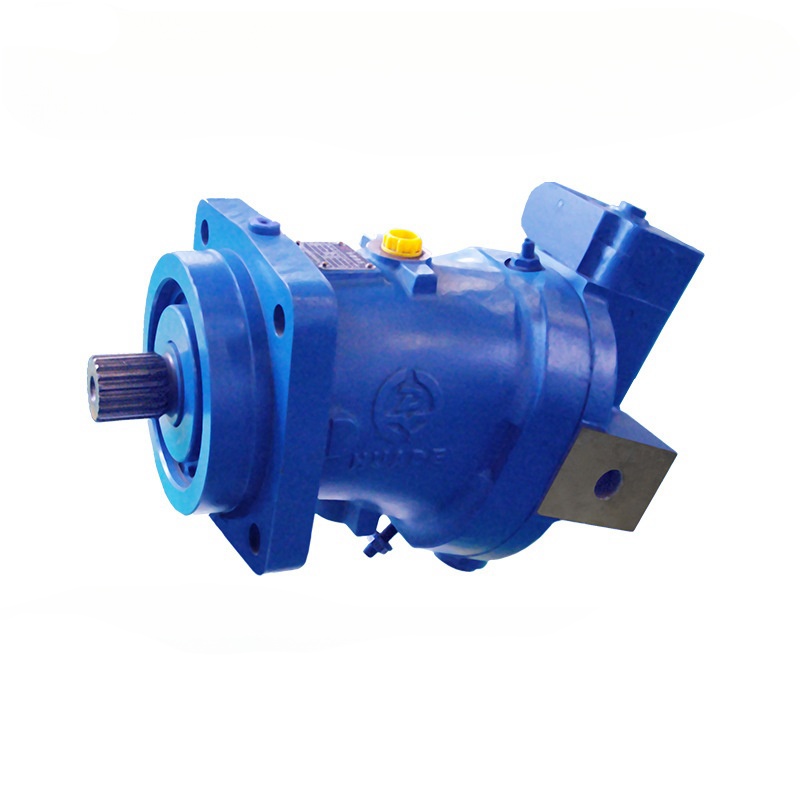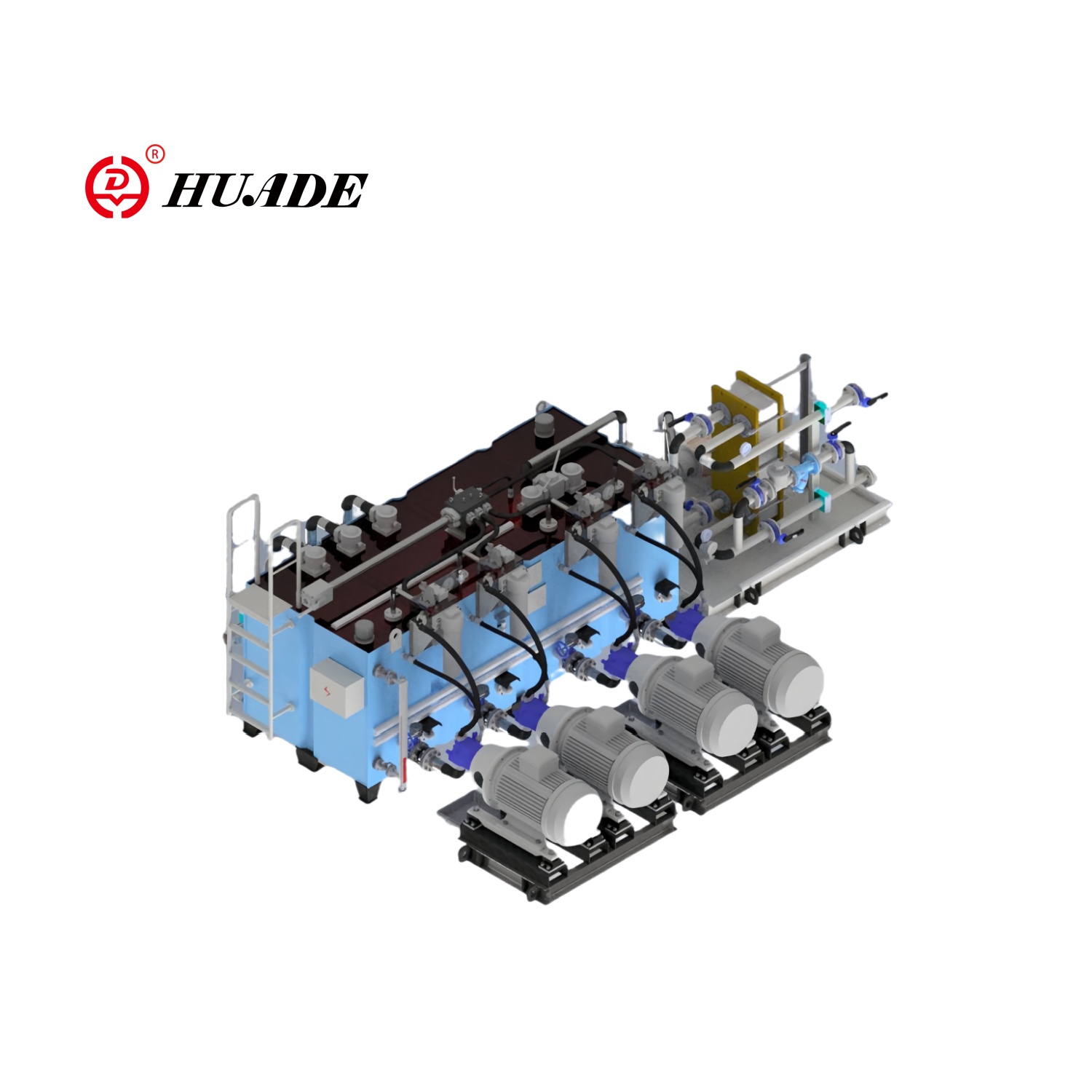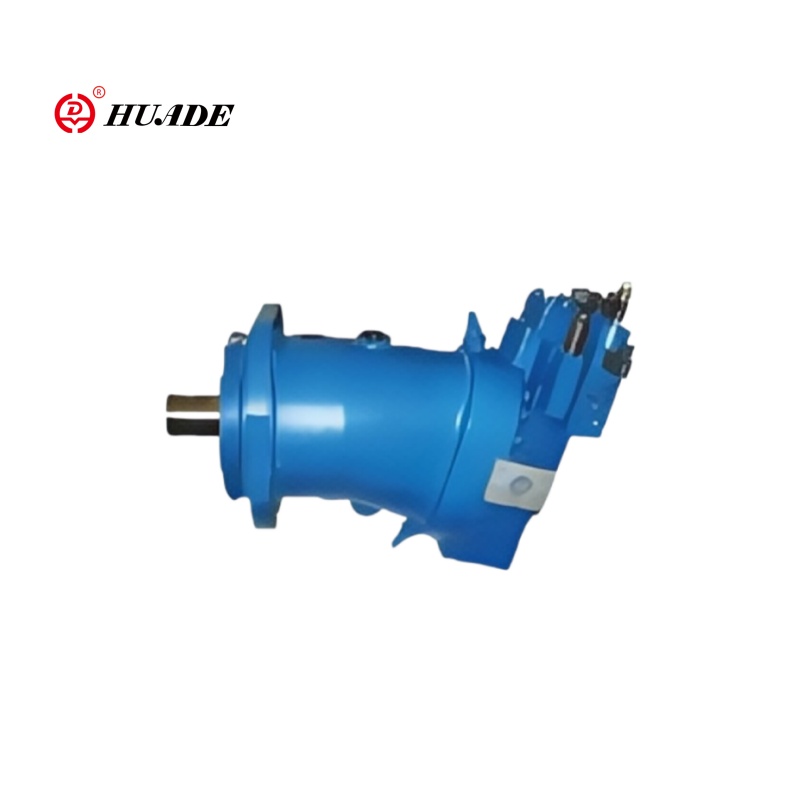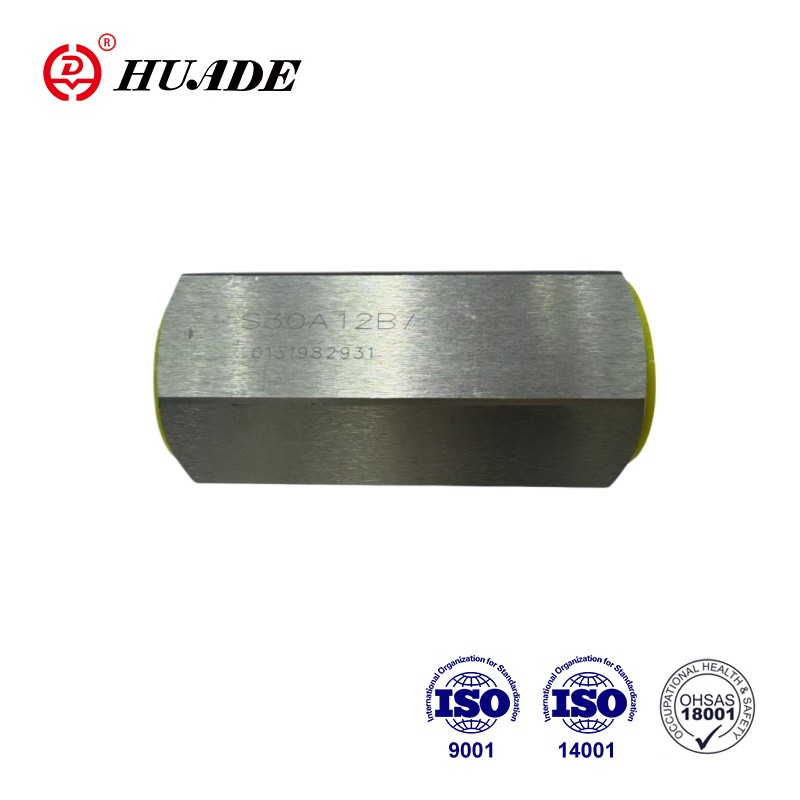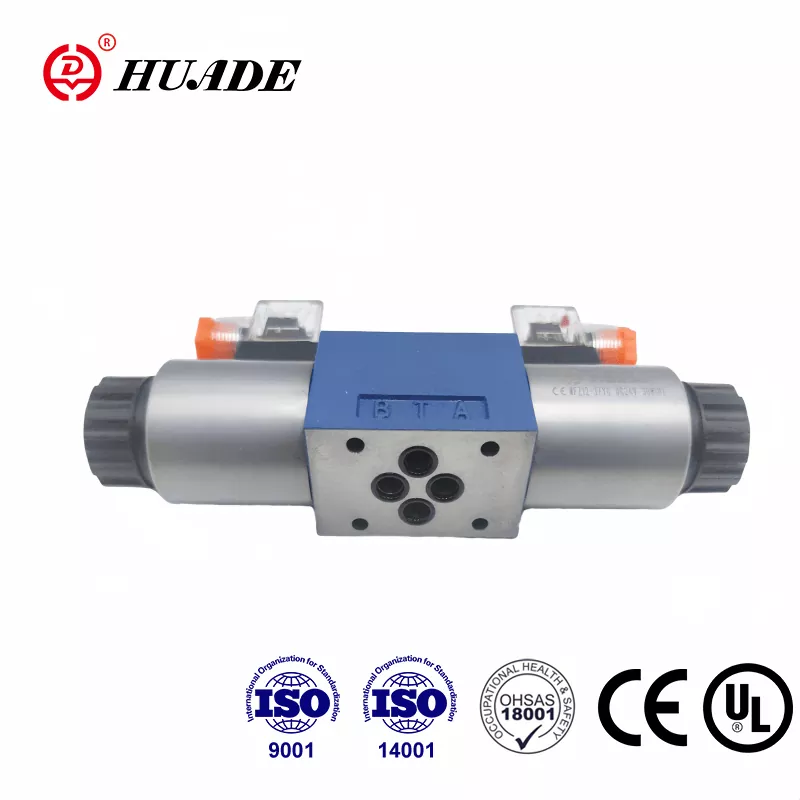When your hydraulic system starts acting up, the culprit is often a worn-out directional control valve. If you're working with Bosch Rexroth equipment, you've probably encountered the 4WE6 series at some point. These valves are workhorses in industrial hydraulics, but they don't last forever. Understanding how to replace a Rexroth directional valve 4WE6 properly can save you time, money, and a lot of frustration.
The Rexroth directional valve 4WE6 is what's called a solenoid-operated directional spool valve. It controls the flow of hydraulic fluid in your system, directing it where it needs to go. When this valve fails, your equipment might refuse to move, respond slowly, or behave unpredictably. Before you rush to order a replacement, it's worth understanding what you're dealing with and what options are available for replacing your Rexroth directional valve 4WE6.
Understanding the Rexroth Directional Valve 4WE6 Basics
The Rexroth directional valve 4WE6 belongs to a standardized family of valves known as size 6 or NG6 valves. This sizing follows the ISO 4401-03-02-0-05 standard, which is commonly referred to as D03 or CETOP 3 in the industry. This standardization is actually good news when you need to replace a Rexroth directional valve 4WE6 because it means the mounting pattern is universal. Any valve that meets this standard will physically bolt onto the same subplate.
However, physical compatibility is just the beginning when you replace a Rexroth directional valve 4WE6. The valve's model number tells you everything about its function. Take the common model R900561274, which has the designation 4WE6D6X/EG24N9K4. Each part of this code means something specific. The "4WE6" indicates it's a four-way directional valve of size 6. The "D" represents the spool symbol, which defines how fluid flows through the valve in different positions. The "EG24" tells you it runs on 24-volt DC power, while "N9K4" indicates it has a manual override and uses a K4 connector.
Getting these details right matters more than you might think when you replace a Rexroth directional valve 4WE6. A valve with the wrong spool configuration won't route fluid correctly, even if it bolts right on. Similarly, connecting a 24-volt DC coil to 110-volt AC power will destroy it immediately. When you replace a Rexroth directional valve 4WE6, you need to match these specifications exactly.
The Rexroth directional valve 4WE6 series handles pressures up to 350 bar and flows up to 80 liters per minute. These aren't small numbers, which is why the Rexroth directional valve 4WE6 is so common in industrial applications. The design uses what's called a high-power wet solenoid, meaning the electromagnetic coil is surrounded by hydraulic fluid. This design helps with cooling and gives the Rexroth directional valve 4WE6 enough force to overcome contamination that might cause sticking.
Why Your Rexroth Directional Valve 4WE6 Fails
Before you replace a Rexroth directional valve 4WE6, it helps to understand why it failed in the first place. The most common problem with the Rexroth directional valve 4WE6 is spool sticking. The valve spool moves inside a precisely machined bore with clearances measured in microns. When contamination enters this space, it acts like sandpaper, increasing friction until the solenoid can't generate enough force to move the spool.
Contamination comes from several sources in systems using a Rexroth directional valve 4WE6. Sometimes it's dirt that entered during maintenance. More often, it's metal particles from wear elsewhere in the system or deposits from degraded hydraulic fluid. These particles lodge between the spool and the bore, jamming the mechanism. When this happens, the Rexroth directional valve 4WE6 might fail to shift, shift slowly, or get stuck in one position.
Another failure mode in the Rexroth directional valve 4WE6 is internal leakage. As contaminants force their way past the spool lands, they score the precision surfaces. These gouges create paths for fluid to leak internally, reducing system efficiency and causing components to move slowly or lose holding power. Once scoring occurs in your Rexroth directional valve 4WE6, cleaning won't fix it. The valve needs replacement.
Electrical failures happen too with the Rexroth directional valve 4WE6, though less frequently. Solenoid coils can fail from overheating, insulation breakdown, or contamination that causes short circuits. The Rexroth directional valve 4WE6 body temperature shouldn't exceed 115°C during operation. If your coils keep burning out, something else is wrong with the system.
Here's something critical that many people miss: if you replace a Rexroth directional valve 4WE6 without fixing the contamination problem, the new valve will fail just as quickly. The Rexroth directional valve 4WE6 isn't the disease; it's a symptom. Your filtration system needs to keep hydraulic fluid clean enough that particles can't reach the valve in the first place. Industry recommendations suggest maintaining cleanliness to NAS 1638 class 9 or better, with a filter beta ratio of at least 75 for 10-micron particles.
Your Options to Replace Rexroth Directional Valve 4WE6
When it's time to replace a Rexroth directional valve 4WE6, you have several paths forward. The safest choice is ordering the exact OEM part from Bosch Rexroth. For a standard Rexroth directional valve 4WE6 model like the 4WE6D6X/EG24N9K4, expect to pay somewhere between $379 and $418. That's not cheap, but you're getting guaranteed compatibility and the backing of the original manufacturer.
The price tag makes many people look at alternatives when they replace a Rexroth directional valve 4WE6, and there are legitimate options available. The D03 standard means other manufacturers produce valves compatible with the Rexroth directional valve 4WE6. Parker offers the D1VW series, Vickers has the DG4V-3S line, and companies like Huade Hydraulics make direct replacements at significantly lower prices, sometimes as low as $34 to $100 for basic models.
These alternatives can work well when you replace a Rexroth directional valve 4WE6, but they require careful verification. Just because a valve meets the D03 mounting standard doesn't mean it's a drop-in replacement for your Rexroth directional valve 4WE6. You need to match the spool function, verify the electrical specifications, confirm the seal material is compatible with your fluid, and check that the solenoid has enough power. Different manufacturers use slightly different designs, and these small differences matter when you replace a Rexroth directional valve 4WE6.
For example, if your original Rexroth directional valve 4WE6 has a "D" spool, you need to find the equivalent in another brand's catalog. Parker's D1VW20BNJW is generally considered equivalent to the Rexroth directional valve 4WE6 model 4WE6D6X/EG24N9K4, while Vickers offers the DG4V-3S-2A-MU-H60 as their version. These cross-references are starting points, not guarantees. Before you commit to an alternative brand to replace your Rexroth directional valve 4WE6, contact their technical support to verify the match.
Pay special attention if your Rexroth directional valve 4WE6 model number ends with "SO" codes or has unusual specifications. These indicate custom modifications that might include special orifices, unique spring rates, or modified coils. For these Rexroth directional valve 4WE6 units, sticking with OEM parts is usually the only safe choice. Generic cross-reference tables only cover standard configurations.
The Process to Replace Rexroth Directional Valve 4WE6
Replacing a Rexroth directional valve 4WE6 isn't complicated mechanically, but it requires attention to detail. Start by thoroughly cleaning the subplate mounting surface. Any dirt or debris here can prevent proper sealing and cause leaks. The mounting surface should be smooth, with a roughness average of 0.8 micrometers or better.
When you bolt the new Rexroth directional valve 4WE6 down, use the correct torque: 4 Nm plus or minus 1 Nm. Too loose and it might leak; too tight and you risk cracking the valve body or damaging the subplate. If your Rexroth directional valve 4WE6 uses positioning dowels, make sure they're seated properly before tightening the bolts.
Electrical connections deserve extra care when you replace a Rexroth directional valve 4WE6. The K4 connector standard uses a three-pin configuration: two for power and one for protective ground. Make sure your cable isn't under tension. The first strain relief point should be within 150 millimeters of where the cable enters the connector. If you're working with Rexroth directional valve 4WE6 units that have two solenoids, remember that only one should ever be energized at a time. Activating both simultaneously can damage the valve.
After you replace your Rexroth directional valve 4WE6 comes a step that many people skip, and it causes problems later. You need to bleed air from the system. The wet solenoid design means the coil chambers fill with hydraulic fluid. If air gets trapped in these spaces, it affects the valve's response time and can cause erratic behavior. Run the system through several complete cycles, shifting the valve back and forth to work air out of the circuit.
Test the installation before putting the machine back into full operation after you replace the Rexroth directional valve 4WE6. Check for external leaks around the mounting bolts and port connections. Verify that the valve shifts properly in both directions and returns to its neutral position when de-energized. If your Rexroth directional valve 4WE6 has a manual override, test that it works smoothly. Watch for any unusual noises or vibrations that might indicate a problem.
Making Your New Rexroth Directional Valve 4WE6 Last
Once you've replaced a Rexroth directional valve 4WE6, your focus should shift to prevention. The best way to extend the life of your Rexroth directional valve 4WE6 is keeping your hydraulic fluid clean. This means more than just changing filters on schedule. You need to monitor fluid condition actively.
Implement regular fluid sampling and analysis after you replace a Rexroth directional valve 4WE6. Testing will catch contamination before it reaches levels that damage components. If analysis shows increasing particle counts, find the source. Something in your system is wearing or contamination is entering from outside. Fix that problem rather than just filtering harder.
Check your filter elements regularly and change them based on condition, not just calendar dates. A differential pressure gauge across the filter will tell you when it's getting clogged. Don't wait until the bypass valve opens, dumping unfiltered fluid back into the system where it can damage your Rexroth directional valve 4WE6.
Temperature control matters too for the Rexroth directional valve 4WE6. Hydraulic systems generate heat, and heat degrades fluid faster. If your system runs hot consistently, you might need better cooling. Monitor the valve body temperature, especially at the solenoid coils. Temperatures approaching 115°C suggest the Rexroth directional valve 4WE6 is working too hard or the coil isn't matched correctly to the application.
Consider keeping a spare Rexroth directional valve 4WE6 on hand, especially for critical equipment. A Rexroth directional valve 4WE6 sitting on your shelf costs less than the downtime you'll face waiting for delivery when a valve fails unexpectedly. This is particularly true if you're using OEM Rexroth parts with lead times of four to six weeks.
Document what you install when you replace a Rexroth directional valve 4WE6. Write down the exact model number, supplier, date, and any observations about the old valve's condition. This information becomes valuable when you need parts in the future or when troubleshooting similar problems.
Cost and Time to Replace Rexroth Directional Valve 4WE6
The total cost to replace a Rexroth directional valve 4WE6 includes more than just the valve price. You need to account for downtime, labor, and potential system modifications. If you're buying OEM Rexroth directional valve 4WE6 parts, budget for that four to six week lead time unless you pay extra for expedited shipping. Alternative brands like Huade typically ship faster, often within two to three weeks, which can matter when equipment is down.
Labor costs vary with accessibility when you replace a Rexroth directional valve 4WE6. A valve mounted on an easily reached manifold might take an hour to replace. One buried deep in a machine could require significant disassembly, turning a simple valve swap into a multi-day project. Factor in time for proper system bleeding and testing afterward.
There's a trade-off between cost and risk when you replace a Rexroth directional valve 4WE6. OEM parts eliminate compatibility concerns but cost more. Alternative brands can save 20 to 30 percent but require more verification work upfront. For non-critical applications, the savings might be worth the extra effort. For equipment where failure means significant production losses or safety risks, the OEM premium is cheap insurance.
Think about the bigger picture too when you replace a Rexroth directional valve 4WE6. If contamination killed your valve, just replacing it won't solve anything. You need to upgrade filtration, which adds cost now but saves money long-term by protecting all your hydraulic components, not just the directional valve.
When to Get Expert Help
Some situations call for professional assistance rather than handling replacement yourself. If your Rexroth directional valve 4WE6 system uses valves with special order codes or custom configurations, contact Rexroth or a qualified distributor. They can verify specifications and source the correct parts. Trying to substitute based on partial information often ends badly.
If you've replaced a Rexroth directional valve 4WE6 but problems persist, something else is wrong. Continuing to swap valves won't fix a system-level issue. A hydraulic specialist can diagnose whether you're dealing with pressure problems, flow issues, or electrical faults that affect valve operation.
For high-value or critical equipment using the Rexroth directional valve 4WE6, professional installation might be worth the cost. Experienced technicians bring specialized knowledge and tools that ensure the replacement is done right the first time. They can also spot related problems before they cause failures.
Moving Forward with Your Rexroth Directional Valve 4WE6
Replacing a Rexroth directional valve 4WE6 successfully requires understanding what you're working with, choosing the right replacement, installing it correctly, and addressing the conditions that caused the original failure. The D03 standard gives you options when you replace a Rexroth directional valve 4WE6, but exercising those options wisely means doing your homework on specifications and compatibility.
The Rexroth directional valve 4WE6 itself is just one component in a hydraulic system. Its reliability depends on fluid cleanliness, proper electrical power, correct installation, and appropriate application. When you approach replacement as part of overall system maintenance rather than isolated component swapping, you'll see better results and longer life from your equipment.
Whether you choose OEM Rexroth directional valve 4WE6 parts or qualified alternatives from Huade, or other manufacturers, the key is matching specifications precisely and maintaining the system properly afterward. Do that, and your replacement Rexroth directional valve 4WE6 should give you years of reliable service.
